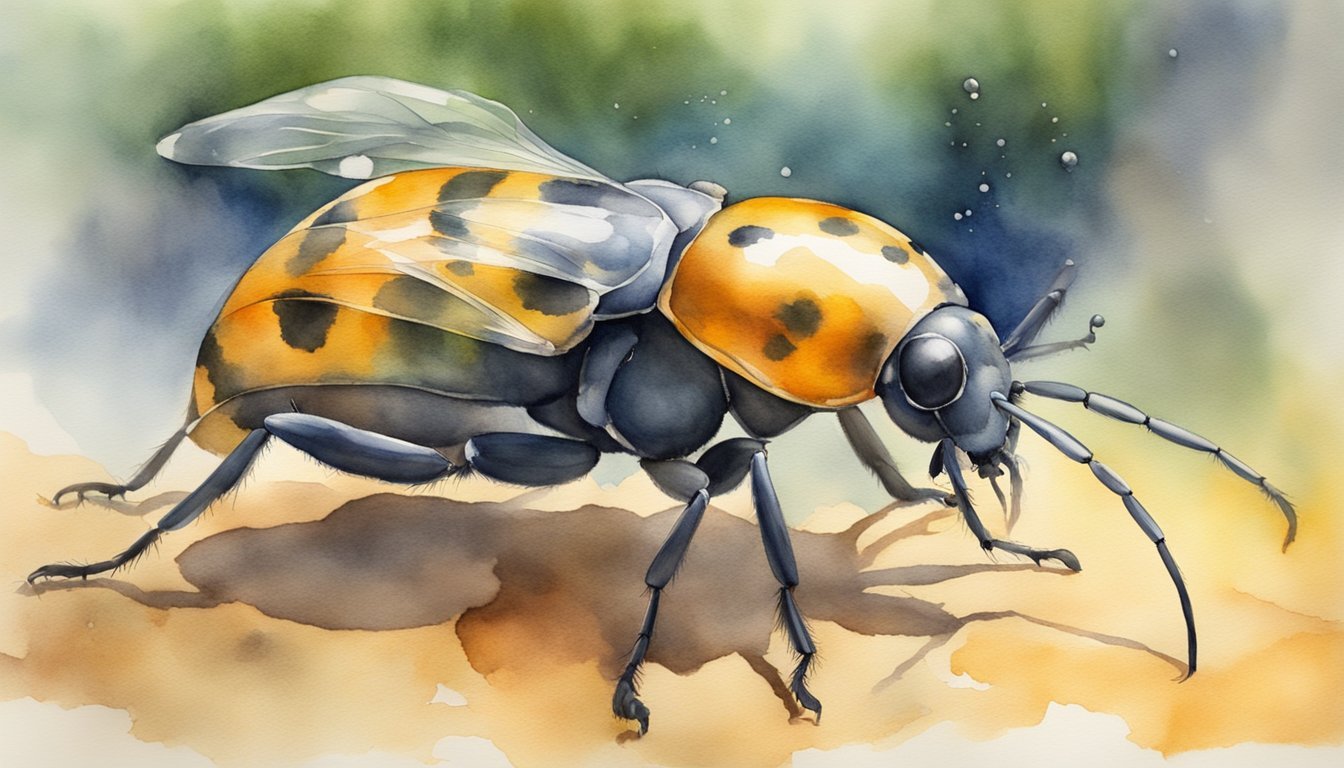Bombardier Beetle Biology
The bombardier beetle has captivated entomologists due to its extraordinary defense mechanism and adaptation. This section uncovers the anatomical and biological features that make these beetles fascinating subjects in the world of entomology.
Anatomy and Defense Mechanisms
Bombardier beetles are equipped with a notable defense system. When threatened, these beetles eject a hot noxious chemical spray from their abdomen. This spray, reaching temperatures near 100°C, is a product of a chemical reaction involving the rapid mixing of hydrogen peroxide and hydroquinone in specialized internal chambers. Heat is generated by catalyzing enzymes, resulting in an explosive ejection, which can effectively deter predators.
- Chemicals Involved: Hydroquinone, Hydrogen Peroxide
- Enzymes: Catalase and peroxidase
- Ejection Temperature: ~100°C
- Defense Strategy: Explosive chemical ejection as a deterrent
Classification and Distribution
Bombardier beetles belong to the ground beetles family Carabidae, within the order Coleoptera, the largest order in the animal kingdom. Specifically, these beetles are classified under the tribes Brachinini, Paussini, Ozaenini, or Metriini. The genus Brachinus is one particularly well-known group of bombardier beetles. There are more than 500 species of bombardier beetles distributed worldwide.
- Family: Carabidae
- Order: Coleoptera
- Notable Genus: Brachinus
Lifecycle and Reproduction
The lifecycle of the bombardier beetle includes egg, larval, pupal, and adult stages. They undergo complete metamorphosis, transforming dramatically through several life stages. The eggs are laid in safe locations, and once hatched, the carnivorous larvae pass through several instars, or molts, as they grow. After the pupal stage, an adult beetle emerges, capable of the defensive chemical ejections this insect is known for.
- Metamorphosis: Complete, with egg, larval, pupal, and adult stages
- Diet: Carnivorous during larval stage
- Molts: Several before reaching maturity
Ecological Role and Evolution

The bombardier beetle plays a pivotal role in its ecosystem, leveraging its unique chemical defense mechanism against predators. Its evolutionary background highlights the diverse survival strategies among insects.
Interactions with Predators and Prey
Bombardier beetles have evolved a distinctive defense system that deters most predators. When threatened, they release a hot chemical spray from the tip of their abdomen, which is created by an exothermic reaction within their bodies. The main component of this defensive spray is 1,4-benzoquinone, an irritating substance capable of deterring larger predators. This capacity to aim their spray over a flexible range, sometimes up to 270 degrees, helps them protect themselves effectively in a wide range of situations.
Habitat and Geographical Range
The habitat of the bombardier beetle is quite diverse; these beetles are found in grasslands and woodlands across all continents except Antarctica. They have been observed in regions ranging from North America to Africa and Australia. Their broad geographical range suggests a high level of adaptability to different environmental conditions.
Evolutionary Significance
The bombardier beetle’s defense mechanism has fascinated researchers and has often been cited in discussions surrounding the theory of evolution and intelligent design. The intricate design of their reaction chamber and precise chemical mix is an interesting case for the study of evolutionary processes. Advancements in high-speed synchrotron x-ray imaging have provided detailed insights into the beetle’s internal structure, supporting the evolutionary hypothesis by illustrating the gradual development of their unique defense system.

